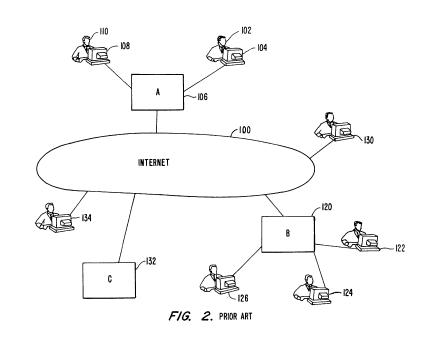
Eolas v. Microsoft (Fed. Cir. March 2, 2005).
Eolas and the University of California sued Microsoft for infringement of its patent that involves a method of using a web browser to open third-party applications using plug-ins. The District Court for the Northern District of Illinois granted final judgment to Eolas after a jury found that Microsoft infringed the patent and actively induced United States users of Internet Explorer to infringe. The district court also invoked 35 U.S.C. § 271(f) to include foreign sales of Internet Explorer in the royalty awarded to Eolas. The jury awarded Eolas a royalty of $1.47 per unit of infringing product, which amounted to a total award of $520,562,280.
On appeal, the Court of Appeals for the Federal Circuit (CAFC) found that district court improperly granted judgment as a matter of law (JMOL) in Eolas’ favor on Microsoft’s anticipation and obviousness defenses and improperly rejected Microsoft’s inequitable conduct defense -- and thus vacated the district court’s decision and remanded for a new trial on these issues. The CAFC also affirmed the district court's claim construction and related jury instruction.
Finally, the biggest news from a patent law perspective is that the Court affirmed the district court’s holding that "components," according to section 271(f)(1), include software code on golden master disks.